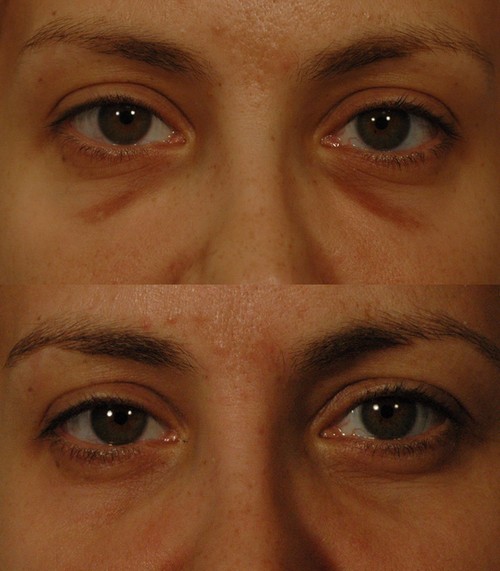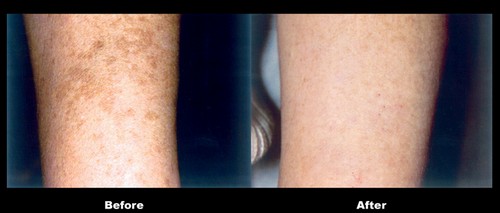Hemosiderin
What is hemosiderin?
It is a pigment, which is a result of hemoglobin’s by-product. It spreads into the tissue after an injury causing bruising and bleeding of the tissues.
The process wherein iron from the blood stains the skin is called hemosiderin staining or hemosiderin stain. It is commonly seen in patients who have undergone surgical procedures like liposuction, especially in the superficial layer of the skin. The blood will then eventually oozes out of the tissue causing the body to go through resorbing. (1, 2)
Hemosiderin pigmentation differs to that of hyperpigmentation because the latter pertains to the process in which the melanocytes and the skin proliferate causing dark patches. What are melanocytes?
They are protective cells absorbing ultraviolet energy to protect the skin from injury. (3)
Is hemosiderin important?
Hemosiderin plays a very important role in repairing acute hemorrhage. Once a blood vessel is ruptured, the red blood cells die and haemoglobin is released in the extracellular space. The released haemoglobin will be consumed by macrophages, which leads to the production of hemosiderin and biliverdin.
You will then notice a yellowish to brownish patches on the skin which is known as hemosiderin stain. The hemosiderin macrophages are the reasons for the formation of hemosiderin stain. (2, 4)

Image 1: A before and after image of patient with hemosiderin stain under the eyes.
Picture Source: celibre.com

Picture 2: Two images of hemosiderin stain. The left side with hemosiderin stain while the right side is hemosiderin stain-free skin.
Photo Source: www.aestheticpittsburgh.com
Who are at risk for hemosiderin staining?
- People who have undergone surgical procedure
- People suffering from cardiac/heart-related problems
- Patients suffering from chronic high blood pressure
- Those who have undergone trauma such as car accident and falling from various heights
- Those people receiving regular injections or after a sclerotherapy
- Those people suffering from systemic health problems like venous insufficiency (4, 6, 7)
Hemosiderin Staining Treatment
What is the best hemosiderin treatment? Can it really be treated? What is the ideal way of treating hemosiderin stain? The problem with hemosiderin is that it is quite difficult for the body to make use of the iron in the blood.
For the stain to fade away, the body needs to use the stored iron. Hence, the primary goal is to use the stored iron.
The good news is there are many ways to hasten the absorption of iron. These include the following:
- Diet modification – People with hemosiderin should have a low iron diet. This is to force the body to use the stored iron in order for the hemosiderin stain to fade away at a faster speed. However, diet modification should only be done under the supervision of a dietician. (5)
- Hands-off process – It is based on the presumption that the hemosiderin stain will actually fade on its own. Although, it would take several months or even years to thoroughly get rid of hemosiderin stain. On a medical standpoint, if the stain has been there for more than a year, it could most likely turn into permanent stain. It can somehow lighten, but the traces will still be there. (7)
- Topical creams – There are creams, gels, lotions, and ointments specially formulated to hasten the healing process and improve the appearance of hemosiderin stain. All you need to do is to apply the topical product directly on the affected skin. What it does is it makes the iron accessible to the body. (8)
- Laser method – This is the modern way of removing hemosiderin stain. It is a new technique but is tested and proven effective. It is done in the clinic under the supervision of a trained and certified personnel. It is a painless procedure and require two sessions to thoroughly get rid of the stain. (10)
- Injections – Another great option is injection method. It helps treat the underlying veins. The degree of injection depends on the severity of the stain. For minor hemosiderin stain, a simple injection is used. For severe cases, an ablation of the deeper veins is needed. It is a method in which the leaked veins are cauterized.
- Cosmetic sclerotherapy – It is a process wherein an agent such as asclera or sotradecol is infected into the veins. It causes occlusion of the vein and over a period of time, the body will reabsorb it. In order for the hemosiderin stain to be permanently removed, the deep leaking veins should be addressed. (6, 9)
What to keep in mind?
For special hemosiderin stain removal procedures, they usually require two to four sessions for you to see the improvement. The treatment and response to treatment primarily depends on the location and extent or severity of the stain.
It also depends on the duration and skin type. The doctor will thoroughly assess your condition in order to come up with the best possible remedy. (6, 10)
What are the dangers of having hemosiderin stain?
Many people want to get rid of hemosiderin stain for cosmetic reason. Having a stain on the skin is an unsightly view, especially if it is on the exposed part of the body. But don’t you know that hemosiderin stain can have a more serious complications? They are the following:
- If hemosiderin stain is left untreated, it could lead to bad ulcers.
- It can lead to chronic pain and joint stiffness.
- Internal hemosiderin stain can be an indicator of iron surplus in the body.
- It can be an indicator of haemochromatosis caused by genetic makeup or multiple blood transfusions.
- Hemosiderin stain could lead to bronze discoloration of the skin.
- It could lead to severe disease such as diabetes, arthritis, and liver cirrhosis.
- Hemosiderin stain in the brain could lead to multiple sclerosis, Parkinson’s disease, and Alzheimer’s disease. (2, 5, 7, 9)
If you notice you have hemosiderin stain, you should contact your health care provider. The doctor will thoroughly assess the condition of your skin and will come up with the best treatment approach. A combination of various hemosiderin stain removal methods can help hasten the healing process.
Hemosiderin stains are best treated while they are still new. Feel free to consult your doctor for more inputs about hemosiderin staining.
References:
- https://en.wikipedia.org
- www.realself.com
- www.zwivel.com
- www.pristinelasercenter.com
- www.wisegeek.org
- www.veindirectory.org
- www.questdiagnostics.com
- www.livingwithvwd.org
- https://rojosonmedicalclinic.wordpress.com
- www.specialtylabs.com
Published by Dr. Raj MD under Diseases and Conditions.
Article was last reviewed on August 6th, 2018.

